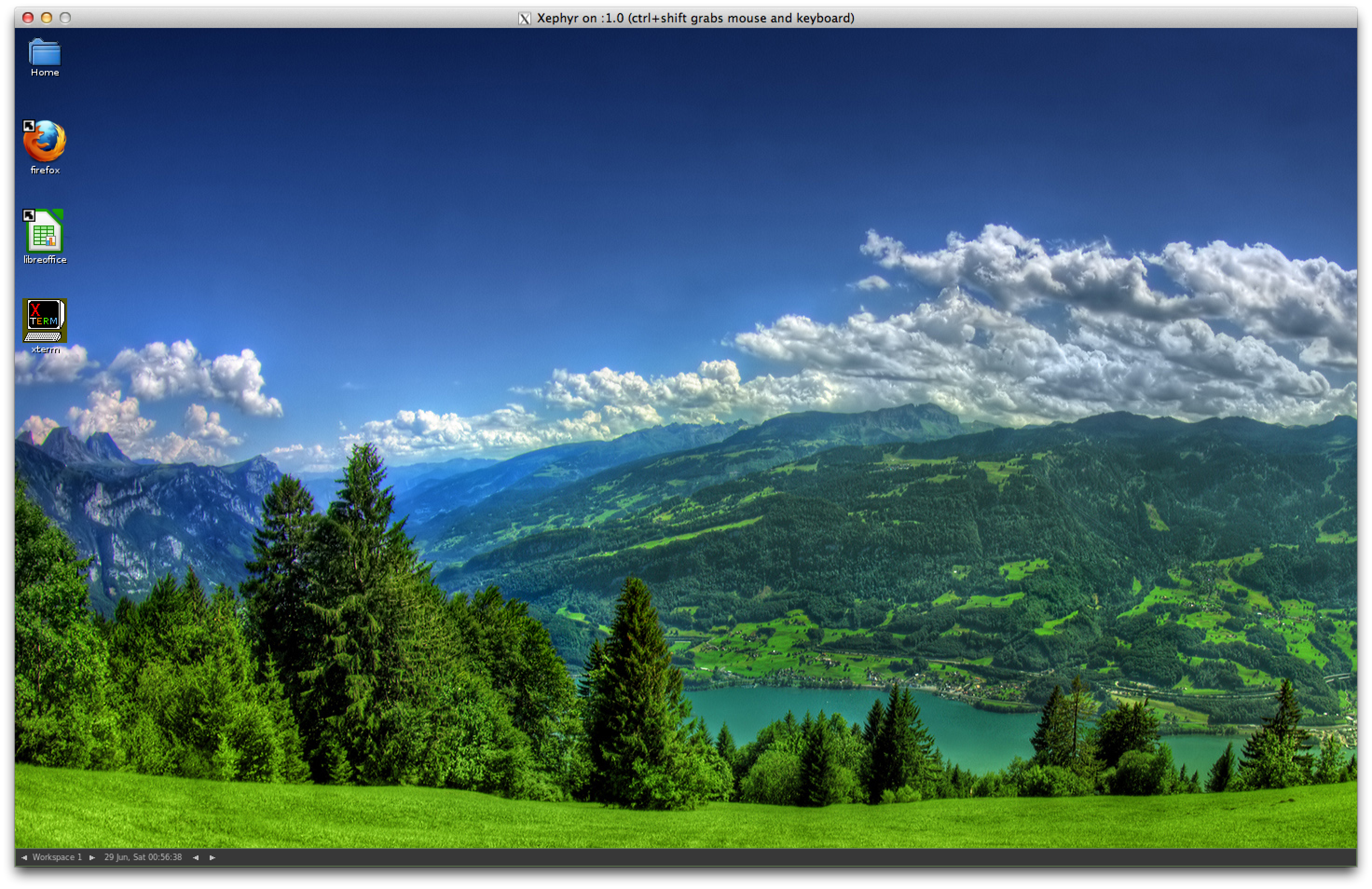##Description
This Dockerfile is intended to run contained GRASS GIS session remotely using SSH.
This Dockerfile creates a docker image and once it's executed it creates a container that runs X11 and SSH services. The ssh is used to forward X11 and provide you encrypted data communication between the docker container and your local machine.
Xpra + Xephyr allows to display the applications running inside of the container such as GRASS GIS graphical user interface or xterm with recovery connection capabilities. Xpra also uses a custom protocol that is self-tuning and relatively latency-insensitive, and thus is usable over worse links than standard X.
The applications can be rootless, so the client machine manages the windows that are displayed.
Fluxbox and ROX-Filer creates a very minimalist way to manages the windows and files.
This repository was derived from: https://github.com/rogaha/docker-desktop
OBS: The client machine needs to have a X11 server installed (Xpra). See the "Notes" below.
##Warning
Note that connections except for ssh -X were not tested.
##Docker Installation
###On Ubuntu: Docker is available as a Ubuntu PPA (Personal Package Archive), hosted on launchpad which makes installing Docker on Ubuntu very easy.
#Add the PPA sources to your apt sources list.
sudo apt-get install python-software-properties && sudo add-apt-repository ppa:dotcloud/lxc-docker
# Update your sources
sudo apt-get update
# Install, you will see another warning that the package cannot be authenticated. Confirm install.
sudo apt-get install lxc-docker
###On Windows: Requirements:
- Installation Tutorial (http://docs.docker.io/en/latest/installation/windows/)
###On Mac OS X: Requirements:
- Installation Tutorial (http://docs.docker.io/en/latest/installation/vagrant/)
##Installation
###Building the docker image
$ docker build -t [username]/docker-desktop git://github.com/wenzeslaus/grass-gis-docker.git
OR
$ git clone https://github.com/wenzeslaus/grass-gis-docker.git
$ cd grass-gis-docker
$ docker build -t [username]/grass-gis-docker .
###Running the docker image created (-d: detached mode, -P: expose the port 22 on the host machine)
$ CONTAINER_ID=$(docker run -d -P [username]/grass-gis-docker)
###Getting the password generated during runtime
$ echo $(docker logs $CONTAINER_ID | sed -n 1p)
User: docker Password: xxxxxxxxxxxx
# where xxxxxxxxxxxx is the password created by PWGen that contains at least one capital letter and one number
##Usage
###Getting the container's external ssh port
$ docker port $CONTAINER_ID 22
49153 # This is the external port that forwards to the ssh service running inside of the container as port 22
###Connecting to the container
####Starting the a new session
$ ifconfig | grep "inet addr:"
inet addr:192.168.56.102 Bcast:192.168.56.255 Mask:255.255.255.0 # This is the LAN's IP for this machine
$ ssh docker@192.168.56.102 -p 49153 "sh -c './docker-desktop -s 800x600 -d 10 > /dev/null 2>&1 &'" # Here is where we use the external port
docker@192.168.56.102's password: xxxxxxxxxxxx
$ ./docker-desktop -h
-----------------------------------------------------------
Usage: docker-desktop [-s screen_size] [-d session_number]
-s : screen resolution (Default = 800x600
-d : session number (Default = 10)
-h : help
-----------------------------------------------------------
####Attaching to the session started
$ xpra --ssh="ssh -p 49153" attach ssh:docker@192.168.56.102:10 # user@ip_address:session_number
docker@192.168.56.102's password: xxxxxxxxxxxx
If you want to execute rootless programs, you just need to connect to the container via ssh and type: DISPLAY=:[session_number] [program_name] &
Eg. DISPLAY=:10 firefox &
###Using the IPython Notebook server
You have to get data to your conatiner by mounting volumes from host or another Docker container.
Alternatively, you can create a new image based on this image and, for example, download the data in the Dockerfile.
In this example we expect GRASS Mapset /grassdata/nc_spm/user1 to exist.
docker run -d -P \
--name $cont_name \
-p 9000:8888 \
-w /notebooks \
-e "PASSWORD=kM7jzr79vniu4" \
-e "PEM_FILE=/key.pem" \
-e "USE_HTTP=0" \
-e "GRASS_BATCH_JOB=/src/notebook.sh"
... (manage volumes) \
[username]/grass-gis-notebook \
grass70 /grassdata/nc_spm/user1
##Notes
###On Windows: Requirements:
- Xpra <= 14.0 (https://www.xpra.org/dists/windows/)
- Path: C:\Program Files(x86)\Xpra\Xpra_cmd.exe
###On OS X: Requirements:
- Xpra Version <= 14.0 (https://www.xpra.org/dists/osx/x86/)
- Path: /Applications/Xpra.app/Contents/Helpers/xpra
###On Linux: Requirements:
- Xpra: You can use apt-get to install it -> apt-get install xpra
- Path: /usr/bin/xpra
